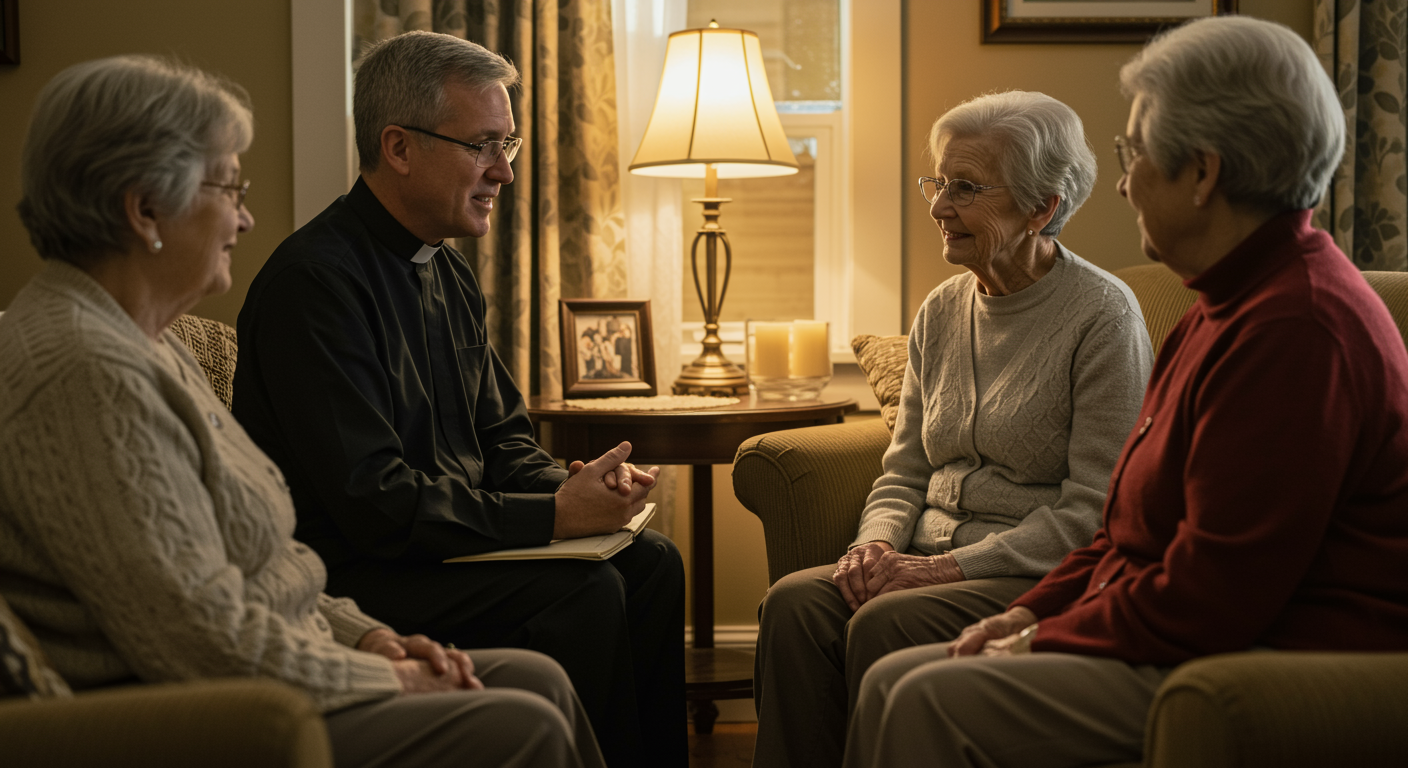Finding Peace: Spirituality and Faith in Life’s Final Chapter (A Utah Valley Perspective)
Against the majestic backdrop of the Wasatch Range, where faith and community intertwine as naturally as the mountain streams flow to the valley, spirituality plays a profound role in end-of-life care. Here in Utah, where the spires of temples punctuate our skyline and ward families extend beyond traditional boundaries, the intersection of faith and medical care takes on special significance.

Understanding Spiritual Care in the Utah Context
Dr. Sarah Jensen, chaplain coordinator at Inspiration Hospice, observes from her office overlooking the Mount Timpanogos Temple, “In Utah Valley, spiritual care isn’t just an addition to medical care – it’s an essential component of whole-person healing. Whether someone is LDS, Catholic, Protestant, or follows another faith tradition, we honor their spiritual journey as much as their physical one.”
The Many Faces of Spiritual Support
Bishop Anderson, who frequently works with hospice teams in Spanish Fork, explains, “Spiritual care looks different for each person. For some, it’s about maintaining temple worthiness even during illness. For others, it’s about finding peace with their life’s journey.”

Spiritual care in end-of-life situations might include:
- Coordination with ward bishops and Relief Society presidents
- Arrangements for sacrament meetings at home
- Support for family prayer and scripture study
- Blessing arrangements when requested
- Interfaith spiritual counseling
- Meditation and mindfulness support
- Sacred music and hymns
- Life review and legacy work
The Utah Valley Approach
In the communities stretching from Payson to Ogden, Inspiration Hospice has developed a unique approach that respects the predominant LDS faith while embracing all spiritual traditions. “We understand that for many families here, faith is the foundation of their support system,” explains Elder Thompson, a former bishop now serving as a hospice chaplain.
Creating Sacred Spaces
Lisa Martinez, an Inspiration Hospice nurse serving the Provo area, shares how they help families create meaningful spiritual environments: “Sometimes it’s as simple as positioning a hospital bed so a patient can see the temple lights at night. Other times, we help coordinate home teachers’ visits or ensure privacy for family prayer time.”

Bridging Faith and Medicine
The integration of spiritual and medical care often includes:
- Coordinating treatment schedules around church commitments
- Respecting fasting when medically appropriate
- Understanding cultural practices around blessing the sick
- Supporting family councils and decision-making
- Honoring priesthood authority while providing medical care
Supporting Multiple Faith Traditions
While the LDS faith is prominent in Utah Valley, hospice teams are trained to support all spiritual paths. “We serve families from every faith background,” notes Rabbi Cohen, who consults with local hospice programs. “The key is respecting each person’s spiritual journey while providing excellent medical care.”

The Role of Community
In Utah’s unique religious landscape, community support often flows through:
- Ward Relief Society organizations
- Home and visiting teaching programs
- Stake leadership support
- Interfaith coalitions
- Community prayer circles
- Temple prayer rolls
Finding Peace Through Faith
Sarah Thompson, whose mother received hospice care in Pleasant Grove, remembers, “Our hospice team understood how important it was for Mom to have her patriarchal blessing read to her. They worked with our home teachers to time visits when she was most alert and comfortable.”

Supporting Family Traditions
Spiritual care extends to supporting important family traditions:
- Family Home Evening adaptations
- Recording of testimonies
- Creation of spiritual legacy letters
- Arranging special musical numbers
- Supporting genealogy work
- Helping with personal history recording
The Journey Forward
As Dr. Jensen reflects, watching the sunset paint the mountains in golden hues, “Here in Utah Valley, we understand that end-of-life care must nurture both body and spirit. When we honor a person’s faith, we help them find peace in their final journey.”
A nurse from Inspiration Hospice adds, “Whether we’re serving a family in a Highland neighborhood overlooking the valley or visiting a patient in downtown Provo, we recognize that spiritual comfort often brings the deepest peace.”
Resources and Support
For families seeking spiritual support during hospice care:
- Coordinate with your ward leadership
- Speak with Inspiration Hospice’s chaplain services
- Connect with local interfaith resources
- Access LDS Family Services when appropriate
- Utilize community spiritual counseling

As the sun sets behind the Mountain and temple lights begin to shine across the valley, spiritual care continues to be an integral part of the end-of-life journey for Utah families. In this unique landscape where faith and community are deeply intertwined, hospice care providers like Inspiration Hospice ensure that spiritual support remains as constant as the mountains that watch over our valley.
For more information about spiritual support services in hospice care, contact Inspiration Hospice, serving families from Utah County to Weber County with understanding, respect, and compassion for all faith traditions.
